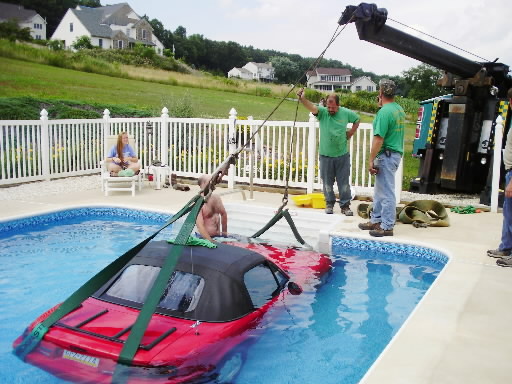
 |
Well it looks good and you want to protect your precious vehicle. So you have become the perfect target of those snake oil merchants that prefer the green in your pocket than to sell you a honest service that achieves the intended purpose.
No sweat, you can beat good old corrosion with a little magic powder and, of course, the green in your wallet. Here is something we have to say about the uselessness of these devices that go by different names, technical descriptions, glossy brochures, and glitzy Web sites.
Cathodic protection (CP), which is the real name of the technique these profiteers are trying to sell you, has been used with success to protect against corrosion on many structures and systems including sea going ships, buried pipelines, and even reinforced concrete. However, there is an area where the technique has no chance to work ... the protection of cars. Human nature being what it is, many entrepreneurs have tried to use the visible successes of CP to make money by offering car owners devices to achieve such protection. They typically offer these snake oil devices at a price that could be reasonable if it did indeed work. In reality, the gizmos they offer are a lost in the suckers pocket and a gain in the entrepreneur crooks bank account. And watch out, they will disguise the same old gadgets with new patents and glitzy technical names, even throwing in a microprocessor!!
Why these gadgets do not work?
One has to understand the principle of CP to understand that the technique works by forcing a protective flow of electrons to the metal that needs protection. For this process to work, you need a complete electrical circuit to bring the electrons back. In the case of an outboard motor on a boat, the sea water completes the circuit. In the case of a bridge, the wet soil completes the circuit. But in your car, the only way to complete the circuit on all the metal in your car is to drive into seawater, bury in soil or again park it in your swimming pool as the gentleman is doing in the following picture (Internet reference 97)!

There are various products on the market claiming to provide cathodic electrochemical protection to your car, just by injecting electrons into your metal work - but they don't work. Countries like Canada and the U.S.A. have actually got court orders to stop these products from being sold - simply because they don't work. In your car, there are lots of little nooks and crannies where dirt and/or water can collect. The rust happens not where the metal is dry, nor where the metal is wet - but at the interface between the wet and dry metal. So if you screwed a bunch of anodes right on the interface or one or two millimeters thereof, you would protect your car. But you would need thousands of these anodes over your car.
Modern car manufacturers often do a process called zinc electroplating on the entire chassis of the car. So long as the zinc is complete, the car will not rust. Your best bet is to regularly clean out all the drain holes so that the water can't collect, scrape off any mud that has collected so that metal does not rust away underneath the mud, and remove the leaves and dirt. And of course, once you've washed the car, you should always take it for a drive so that any trapped water can slosh out.
 |